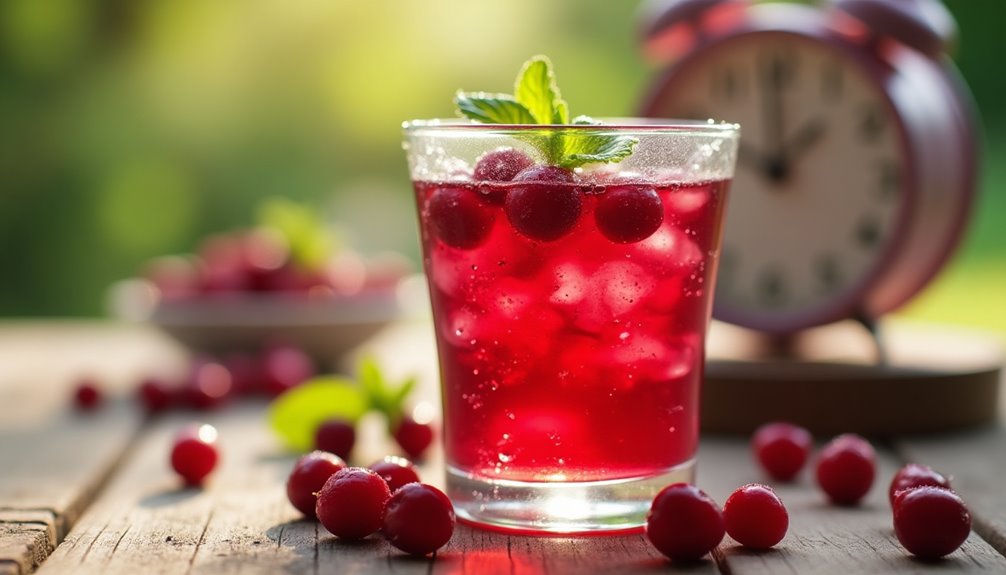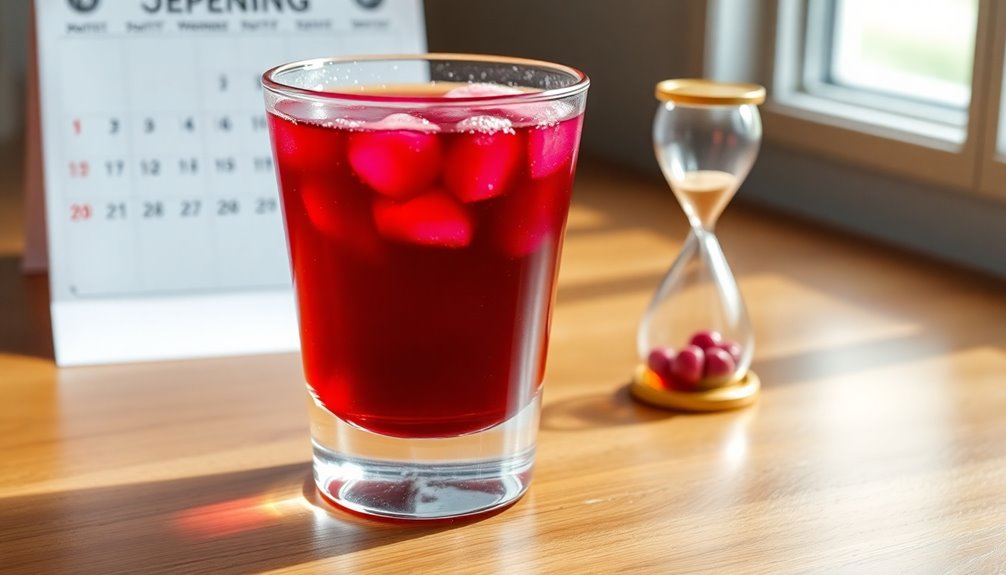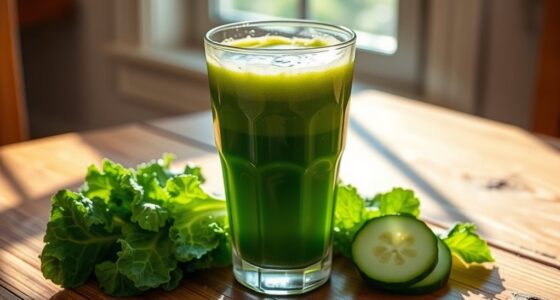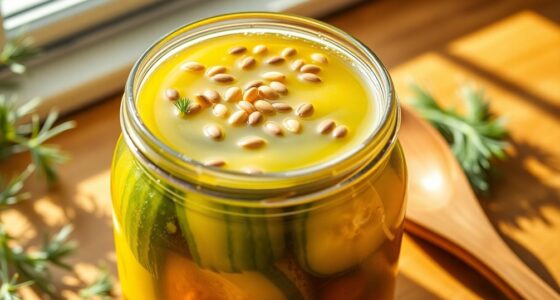Cranberry juice has a shelf life of 18 to 24 months when unopened, but once you open it, you've got about 8 to 12 days to enjoy it if refrigerated. For the best taste, try to finish it within three weeks after opening. If you have excess juice, consider freezing it, where it can last up to a year. Want to know more about storage tips and signs of spoilage? Just keep going!
Key Takeaways
- Unopened cranberry juice can last 18 to 24 months at room temperature.
- Opened cranberry juice typically lasts 8 to 12 days when refrigerated.
- For optimal taste, consume opened juice within three weeks.
- Freezing cranberry juice extends its shelf life up to one year.
- Signs of spoilage include changes in color, unpleasant odors, or mold presence.

When you reach for that bottle of cranberry juice, you might wonder how long it stays fresh. Knowing the shelf life can help you avoid wasting that delicious juice. Unopened cranberry juice has a surprisingly long shelf life, lasting about 18 to 24 months at room temperature. This means you can stock up without worrying too much about it going bad in the pantry.
However, once you crack that seal and open the bottle, things change. Opened cranberry juice typically lasts around 8 to 12 days when refrigerated. To ensure you get the best taste and freshness, it’s ideal to consume it within three weeks after opening. It’s important to check for any signs of spoilage, such as off smells or changes in color, which can indicate that the juice has gone bad. Generally, understanding how long cranberry juice lasts opened can help you avoid waste and ensure you’re enjoying the product at its peak quality. By storing it properly and keeping it refrigerated, you can maximize its freshness throughout its shelf life.
Proper storage plays a huge role in maximizing the shelf life of your cranberry juice. After you've opened the bottle, make sure to keep it tightly sealed and refrigerated. This simple step can help maintain its flavor and quality for as long as possible.
If you find yourself with more cranberry juice than you can drink in a couple of weeks, consider freezing it. When stored properly in the freezer, cranberry juice can last up to one year. Just keep in mind that some flavor and texture might be lost once you thaw it, but it can still be a great option for later use.
It's essential to be aware of the signs of spoilage in cranberry juice, especially after it's been opened. If you notice a change in color, such as a darker hue than when you first opened it, that could be a red flag. Unpleasant odors can also indicate that your juice has gone bad, so trust your nose.
Additionally, if you see any mold or floating particles, it's best to toss the juice out. These signs are crucial in ensuring you're not consuming something that could make you sick.
When you think about optimal freshness, remember that it's all about how you store your opened cranberry juice. Keeping it refrigerated is vital, and if you need to store it for a longer period, freezing is a great alternative.
Just make sure you use a freezer-safe container to avoid any messes. With the right storage techniques, you'll enjoy your cranberry juice to the fullest while minimizing waste.
Frequently Asked Questions
How Long Does Cranberry Juice Last in the Fridge?
Once you open cranberry juice, it typically lasts about 8 to 12 days in your fridge.
To keep it fresh, store it in an airtight container, ideally the original bottle or carton.
Make sure to check for any signs of spoilage, like changes in color, odor, or mold, before drinking.
If you want to enjoy it longer, consider freezing the juice, which can extend its shelf life up to 12 months.
How Long Is Ocean Spray Cranberry Juice Good For?
Did you know that unopened Ocean Spray cranberry juice can last 18-24 months at room temperature?
Once you've opened it, you should refrigerate it and drink it within 8 to 12 days for the best taste.
If you want to keep it longer, you can freeze it in airtight containers for up to 12 months, but be aware there might be some flavor loss.
Always check for spoilage signs to ensure freshness!
Is It Okay to Drink Old Cranberry Juice?
It's generally okay to drink old cranberry juice, but you need to check for signs of spoilage first.
If it looks normal and smells fine, it might still be safe. However, once opened, it's best to consume it within a week or so for optimal flavor and safety.
Trust your senses—if you notice any changes in color, odor, or mold, it's best to toss it out to avoid any potential risk.
How Long Does Opened Juice Last in the Refrigerator?
Opened juice typically lasts about 8 to 12 days in the refrigerator.
To keep it fresh, store it in an airtight container, preferably the original one. The moisture in juice can promote bacterial growth, so proper storage is key.
Always check for signs of spoilage like changes in color, sour smells, or floating particles.
Regularly inspect your juice, especially as the days pass, to ensure it's still safe to drink.
Conclusion
In the grand scheme of things, knowing how long cranberry juice lasts can save you from a sour experience. Whether it's fresh, opened, or unopened, paying attention to those dates and storage tips ensures you enjoy every drop. So, keep an eye on your juice, and don't let it go to waste. After all, a little prevention goes a long way, and you'll always have that refreshing taste at your fingertips!
Cindy thoroughly researches juicing trends, techniques, and recipes to provide readers with practical advice and inspiration. Her writing style is accessible, engaging, and designed to make complex concepts easy to understand. Cindy’s dedication to promoting the advantages of juicing shines through her work, empowering readers to make positive changes in their lives through the simple act of juicing.

















